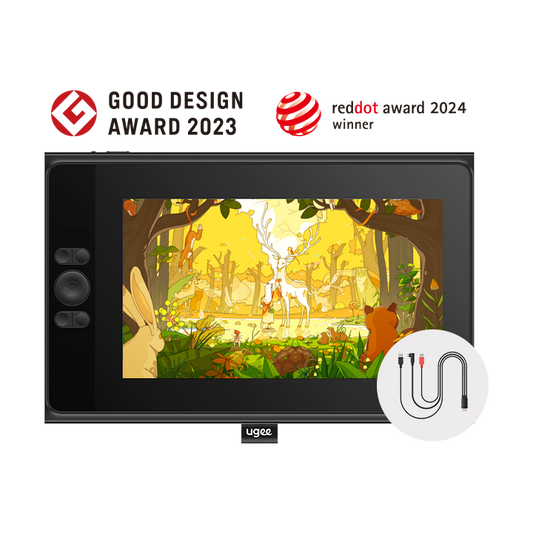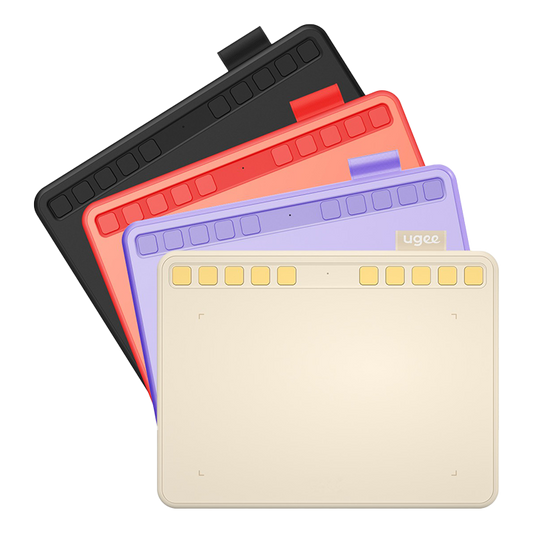Recreate and Learn: Drawing Ideas Based on Famous Artworks
In today's digital age, digital drawing has become more accessible and convenient than ever before. Whether you're a seasoned artist or just starting out, digital drawing tools open up a world of possibilities. But what do you do when inspiration runs dry? When there is zero drawing idea, one effective way to spark creativity is by recreating& drawing inspiration from famous artworks. This method not only provides a solid learning foundation but also encourages beginners to develop their skills by studying the masters. Let’s dive into some drawing ideas based on renowned masterpieces and explore how you can use them to enhance your digital art journey.
Choosing Famous Artworks
Here are five famous artworks that are perfect for beginners to recreate. Each piece offers unique styles and techniques to learn from, and Let’s break down these masterpieces to understand what makes them special and what you can learn from each:
- Vincent van Gogh’s Starry Night
- Style:Post-Impressionism
- Characteristics: Expressive brushstrokes, vibrant colors, swirling patterns.
- Analysis: Van Gogh’s use of bold, swirling brushstrokes and bright colors creates a sense of movement and emotion. Beginners can practice mimicking these techniques to understand the power of expressive lines and color contrasts.

- Claude Monet’s Water Lilies
- Style: Impressionism
-Characteristics: Emphasis on light and color, soft transitions, and reflections.
-Analysis: Monet’s focus on light and reflection can teach you about creating depth and atmosphere in your work. Try to capture the subtle gradients and play of light on water.

- Pablo Picasso’s Guernica
- Style: Cubism
- Characteristics: Geometric shapes, multiple perspectives, monochromatic palette.
-Analysis: Picasso’s cubist approach breaks down subjects into geometric shapes, offering a unique way to see and represent forms. Experiment with abstracting your subjects and exploring different perspectives within a single composition.

- Leonardo da Vinci’s Mona Lisa
- Style: Renaissance
- Characteristics: Intricate details, subtle shading, enigmatic expression.
- Analysis: Da Vinci’s mastery of sfumato (soft shading) and detailed anatomy is a great study in precision and realism. Practice blending and creating lifelike features to improve your detailed rendering skills.

- Michelangelo’s The Creation of Adam
- Style: Renaissance
- Characteristics: Grand composition, dynamic figures, dramatic use of light and shadow.
-Analysis: Michelangelo’s powerful depiction of the human form and dynamic composition provides insights into creating movement and drama. Focus on the anatomy and how figures interact within the space.

Adding Your Creative Touch
While drawing and absorbing inspiration from those artworks, don't forget to inject your creativity and style. Here’s how you can do it:
- Personalize Colors: Try using a different color palette that resonates with your mood or style. We believe that at every different stage, you may have a preferred color palette, so make it flow with your style.
- Modify Composition: Change the layout or elements within the artwork to make it unique.
- Combine Styles: Blend techniques from multiple artists to create something entirely new.
- Add Modern Elements: Incorporate contemporary subjects or themes into classical compositions for a fresh twist.
And make it digitally, adding some modern elements to bring sparkles.
For instance, you can take the swirling skies of Starry Night and combine them with the reflective qualities of Water Lilies to create a unique landscape. The key is to use these masterpieces as a foundation, and then build upon them with your digital drawing tools.
You can use ugee UE16 Drawing Monitor to try all those thoughts, and make use of it's muti customizable shortcut keys.
The ugee UE16 is a 15.4-inch full HD monitor that combines ultra-high color gamut up to 143% sRGB, a maximum brightness of 220 cd/m2 and 1000:1 contrast ratio, weighing only 1.28kg(2.8 pounds). The UE16 makes no compromises other than weight.
Actually, we are not talking about recreating or copying, there are valuable resources to learn from, and we draw inspiration.
Practice is crucial in art, and there’s no better way to practice than by learning from the best. By recreating famous artworks, you not only hone your technical skills but also develop an understanding of different artistic styles and techniques. So, grab your Ugee UE16 tablet or drawing monitor and start experimenting with these drawing ideas. The journey of creativity and discovery awaits you!
We’d love to see your creations! Share your recreated artwork with us and let us know how these exercises have helped you. Your feedback is invaluable, and who knows, your work might inspire others too!




